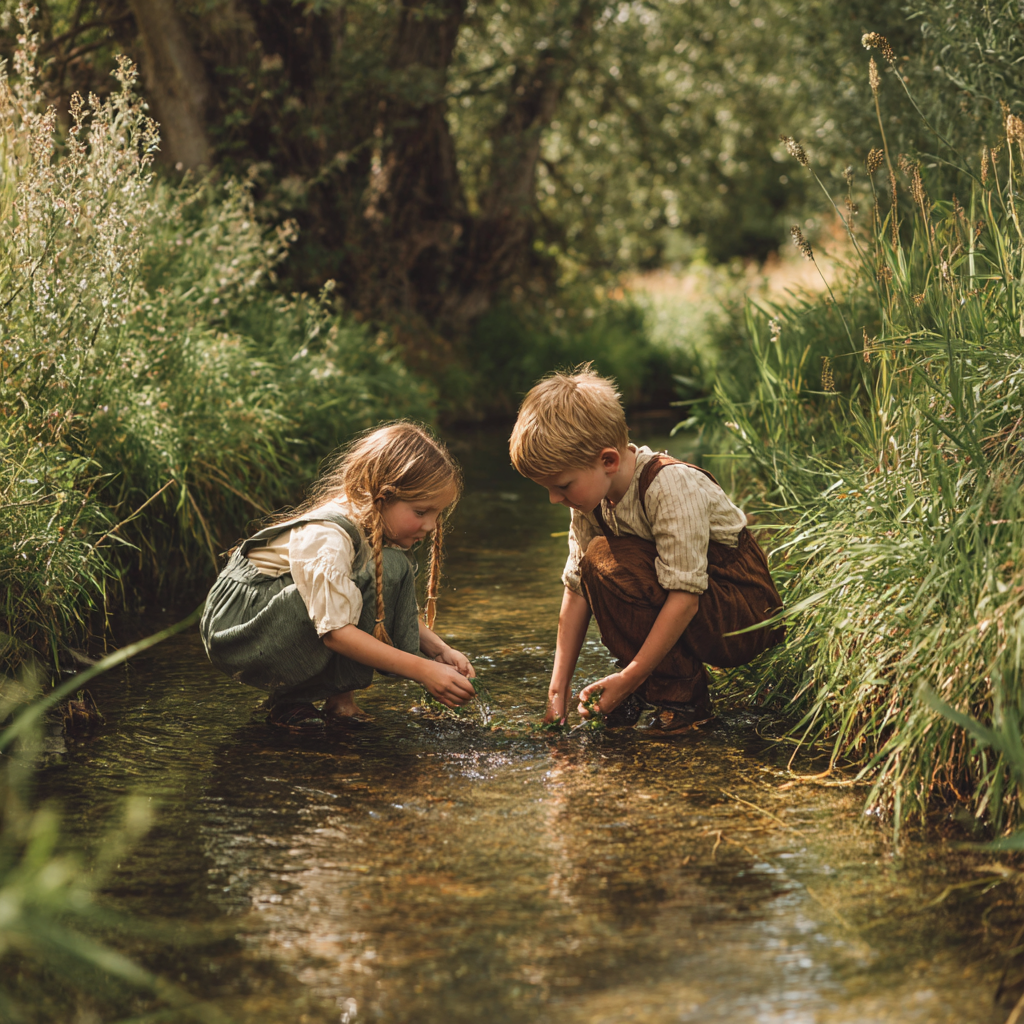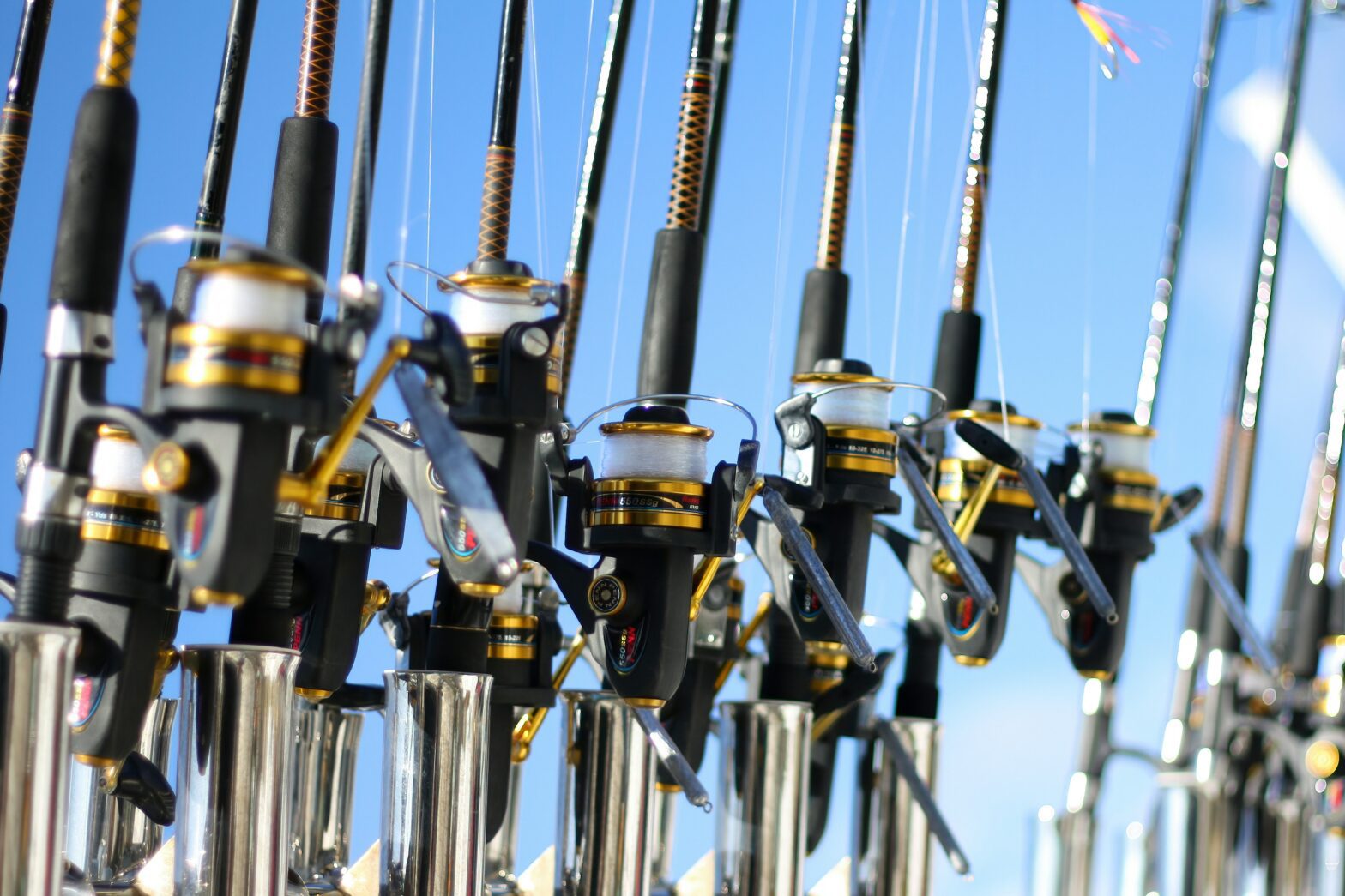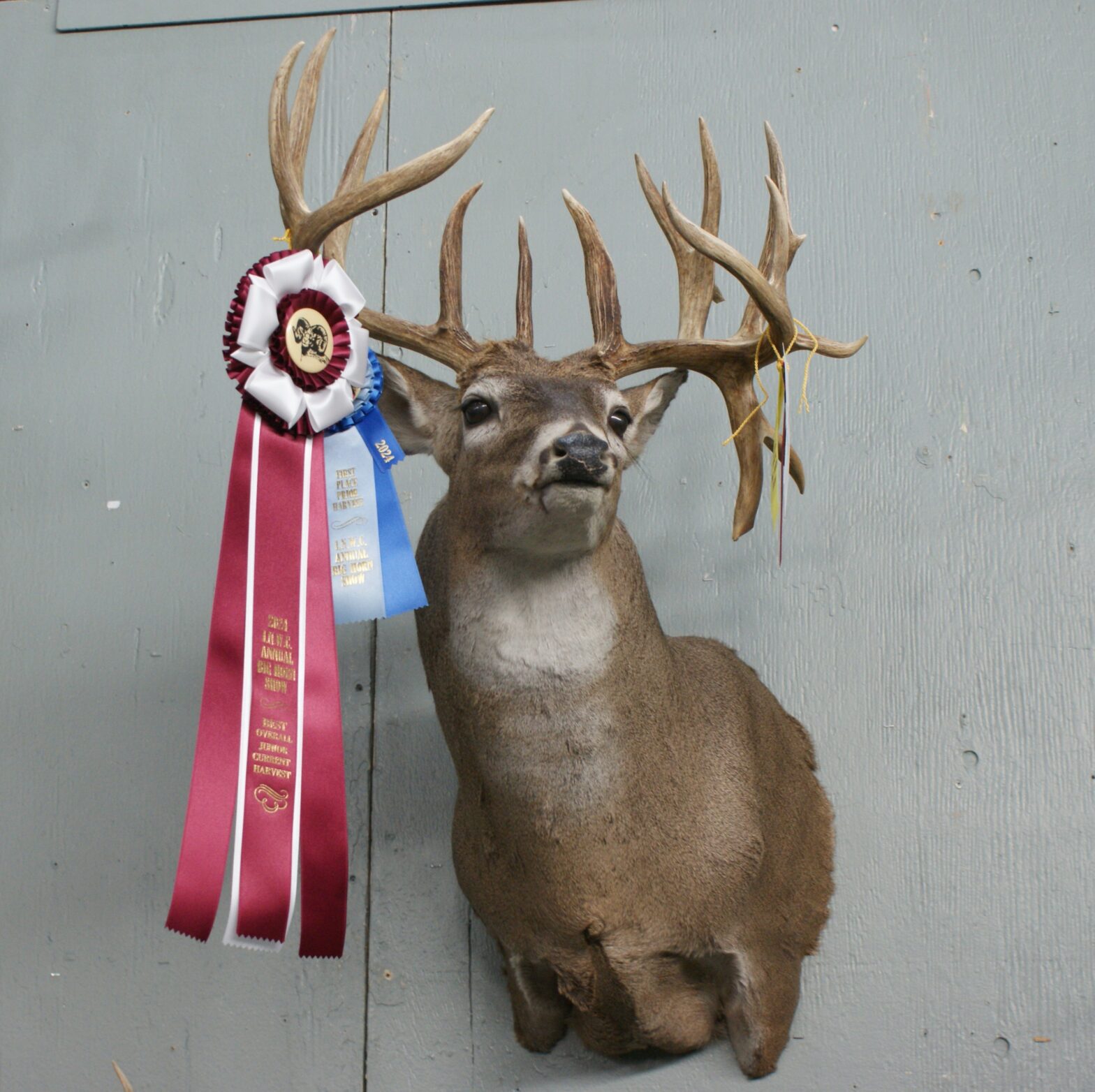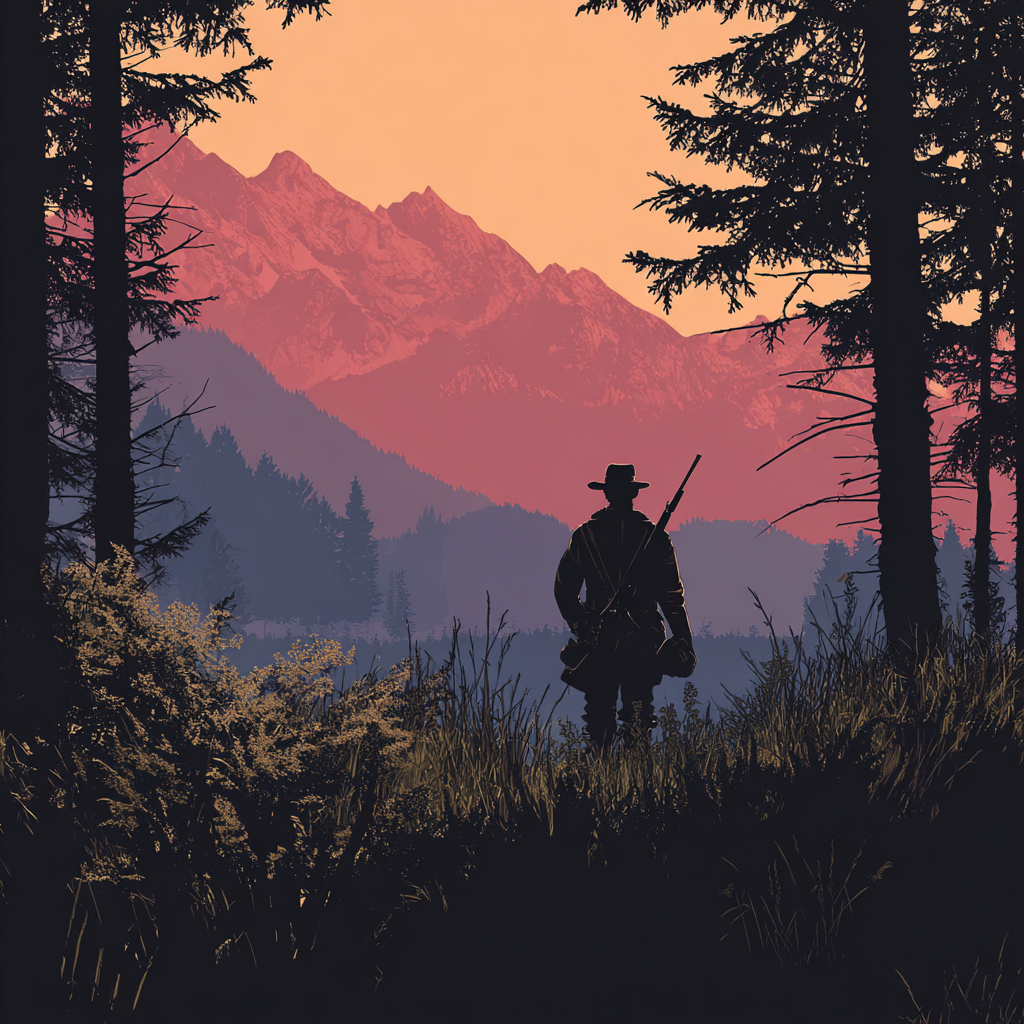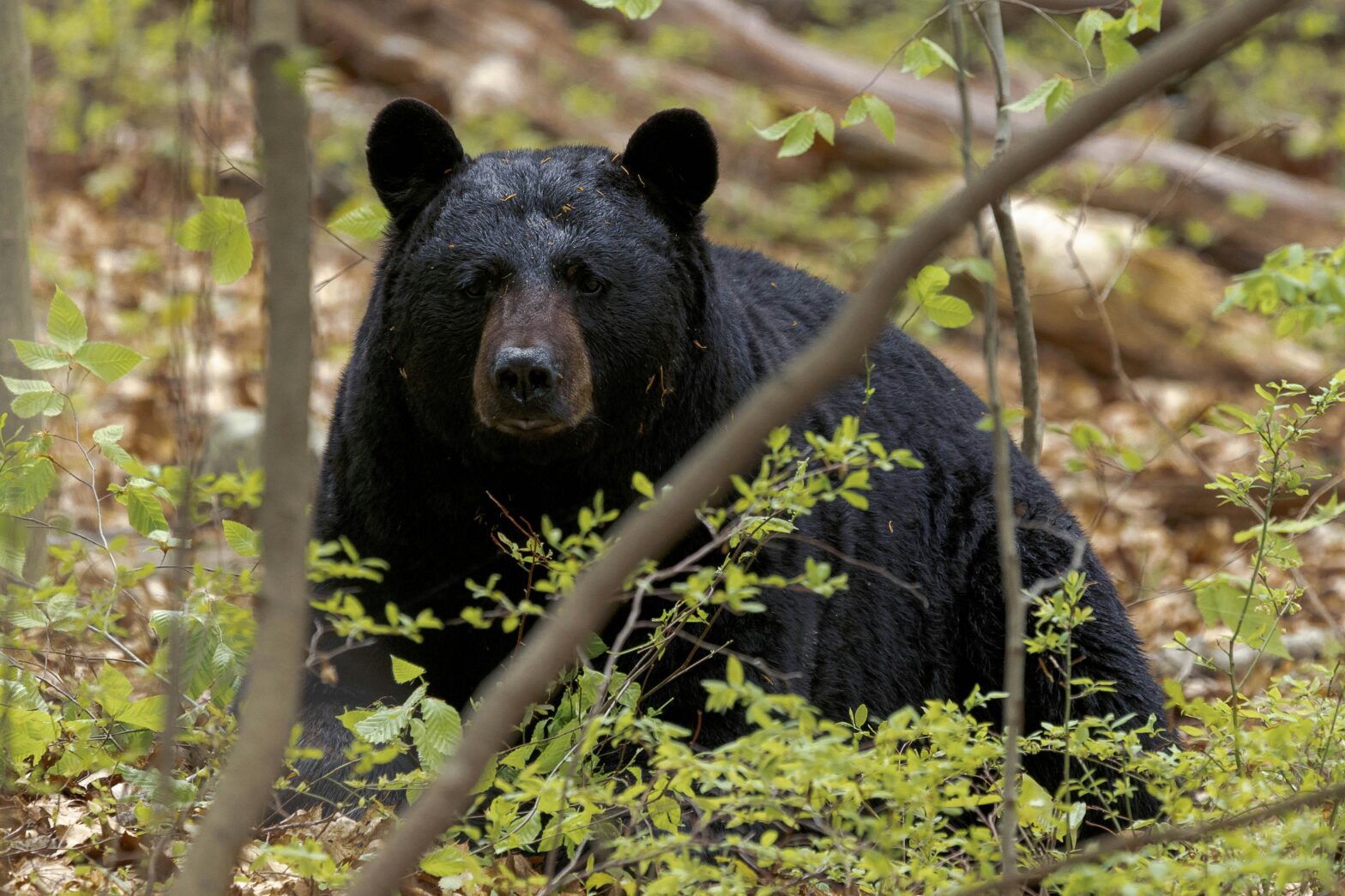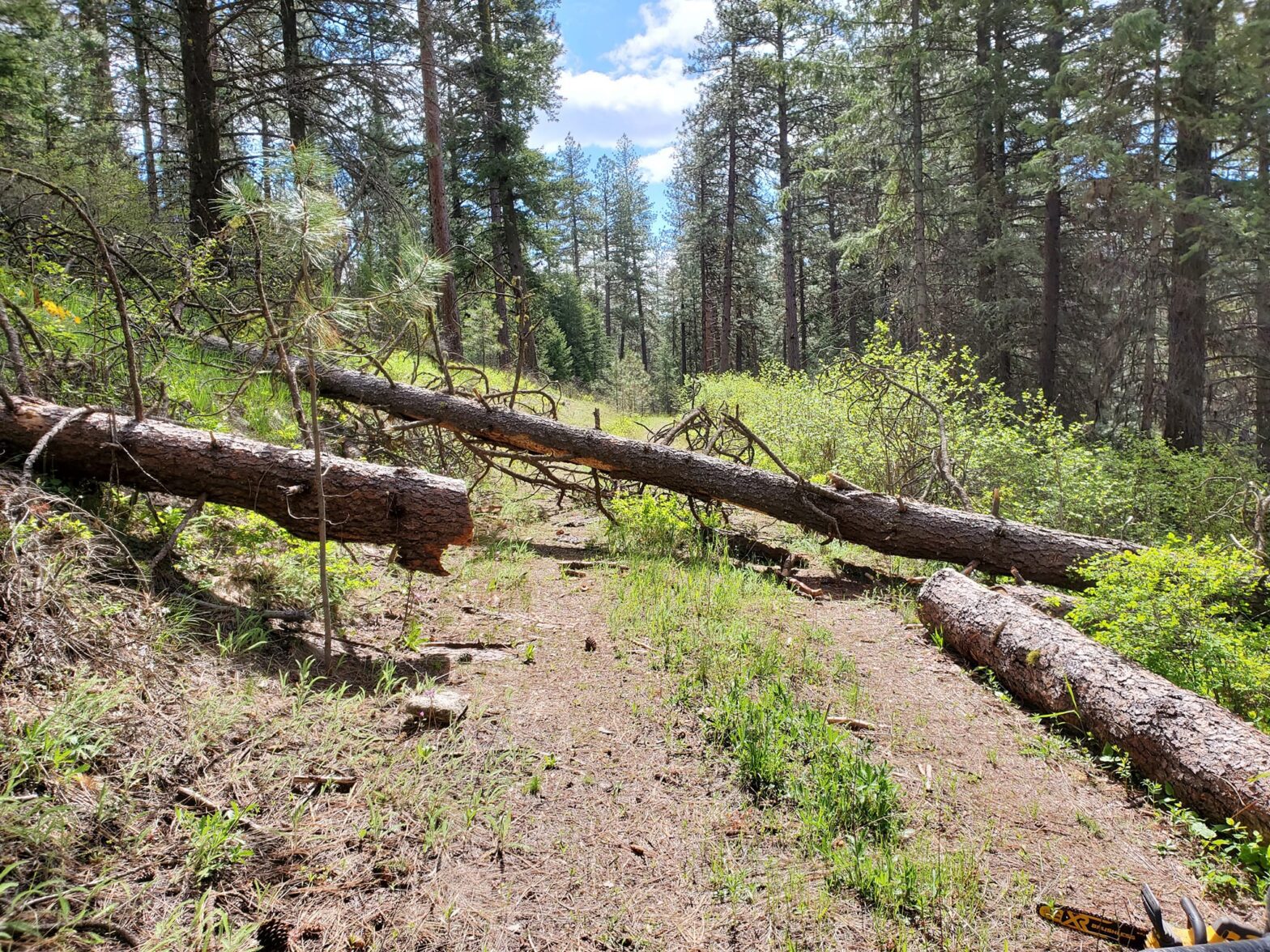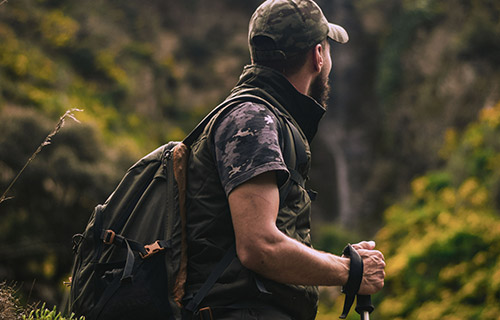Most of us didn’t learn to love the outdoors from a book.We learned it from wet boots, muddy hands, and the patient adults who showed us how to tell a deer track from a dog print without turning it into a pop quiz. Ask anyone in the Inland Northwest Wildlife Council how they got started, and you’ll hear familiar stories: fishing with a grandparent at a lake that “used to be quieter,” learning to shoot in the field instead of a classroom, or being turned loose in the woods with just enough supervision to keep things legal. These aren’t just fond memories—they’re the starting points of lifelong conservationists. And while every story is different, they all share the same thing:Someone showed us the way. Why Kids Need the Outdoors More Than Ever Today’s kids face a different world than many of us grew up in.More screens, less unstructured time, and fewer backyards that turn into wilderness with enough imagination. But the curiosity is still there. Kids are still kids—put them near a creek, and they’ll find the deepest part to step into whether you warned them or not. Hands-on discovery still works.Tadpoles still turn into frogs.Tracks still tell stories.And the outdoors still has a way of teaching patience, responsibility, and humility the same way it always has. (Usually by the method known as “the one that got away.” Some lessons never change.) Mentorship: The Thread That Connects Generations If you look back at your own outdoor education, chances are it didn’t come from a single moment; it came from a series of small ones. A parent teaching you to read a compass. A grandparent pointing out bird calls. A neighbor explaining why you don’t shout when you’re trying to spot a buck. Those lessons stick because someone cared enough to pass them on. That’s what the INWC works to protect: not just wildlife, not just habitat, but knowledge.Knowledge that only survives when people deliberately hand it down. And that’s why youth outreach matters. What INWC Is Doing for the Next Generation Kids Fishing Day Over a thousand young anglers get the chance to make their first cast, learn new skills, and leave with a fishing pole they’ll use long after the event. For many, it’s their first real connection to the outdoors—and the spark that leads to a lifetime of stewardship. Camp Reed Outdoor Education Our volunteers bring wildlife skulls, skins, and stories to hundreds of kids. The questions they ask range from brilliant to hilariously blunt, but the point is always the same: get them curious. Once a kid holds a beaver skull, “conservation” stops being an abstract idea. It becomes real. Growing Mentorship Opportunities We’re expanding opportunities for kids and teens to learn from experienced outdoorspeople. Because every accomplished hunter, angler, or conservationist started with someone who showed them the ropes, and now it’s our turn. Together, these programs form a pipeline of knowledge, respect, and enthusiasm that keeps Washington’s outdoor traditions alive. Why This Matters for Giving Tuesday Giving Tuesday is more than a national moment of generosity; it’s our chance, as a community, to invest in the future of Washington’s outdoor heritage. If we don’t pass these skills, values, and traditions to the next generation, they won’t magically reappear.They’ll fade, slowly and quietly, the way underused trails do. But the opposite is also true:When we invest in kids, the outdoors stays alive.Not just the landscapes—the legacy. And that’s where you come in. A Strong Call to Action: Help Us Pass the Torch If you believe in what Kids Fishing Day does…If you want to put skulls, skins, and real wildlife education into kids’ hands…If you understand how powerful one good mentor can be…If you want Washington’s outdoor traditions to survive, not just in memory, but in practice… Then we need you to stand with us on Giving Tuesday. Your donation goes directly toward the youth programs, outreach, mentorship, and hands-on conservation education that keep the next generation connected to the wild. This is not abstract.This is not someday.This is right now. Help us pass the torch.Help us shape tomorrow’s stewards.Help us keep the wild alive, one kid at a time. 👉 Donate this Giving Tuesday and pay it forward to the next generation Thank you for standing with us—and for believing that the future is worth investing in.
Category Archives: Blog
Conservation Corner
This Conservation Corner article is written by INWC member Ken McNaughton, M.F., who chairs our Fishing Committee. Ken shares an important conservation practice that many anglers may not be aware of—one that can make a significant difference for wildlife and our aquatic environments with just a small change in how we dispose of used fishing line. Recycling Fishing Line is Conservation The first thing to know about recycling old line is the fishing line types that can be collected. The only recyclable and, therefore, the most eco-friendly fishing line is a single-filament, nylon product like monofilament or fluorocarbon—even if it’s colored fishing line. Monofilament is a strong, single-strand plastic line—and the most common type among anglers. Fluorocarbon is a single strand of polyvinylidene fluoride. In a landfill, these types of lines won’t break down over time, so they can pose problems for birds and animals who get tied up in them. That’s why it’s great that they can be recycled. Other lines, like braided or fused types, can’t be recycled, but there are still ways to handle these discarded lines to minimize their impact on the environment. Finding a Collection Station Once you know that your line can be recycled, it’s important to understand that you can’t place it in your home recycling bin. Instead, you need to find a designated collection station. In cooperation with the Region 1 office of WDFW, the INWC, several years ago, installed 39 monofilament recycle stations at 31 area lakes managed by WDFW. Many INWC volunteers helped make this project a success. If you don’t know where to find one, contact the Area Water Access Manager at WDFW. Or check popular places that accept old line in marked bins placed either inside or outside, including bait and tackle shops, boat ramps, fishing piers, and fishing access points. Preparing Your Line for Recycling Keep in mind that only the line itself can be recycled. That means you have to remove any hooks or lures before you place the line in a bin. It’s also essential to make sure the line doesn’t have a lot of plant material or other growth on it before putting it in a collection facility. Create Your Own Collection Site If you don’t have a collection site anywhere near you for old fishing line, you can create your own! You can build a bin just like the ones at our established stations with 4 inch PVC and supplies from your local hardware store. Recycling fishing line is one of those simple conservation actions that carries tremendous importance. Discarded monofilament and fluorocarbon lines can persist in the environment for hundreds of years, entangling birds, mammals, and aquatic life with devastating consequences. By taking a few extra moments to properly dispose of old fishing line at designated recycling stations, anglers directly protect the wildlife and natural spaces we all cherish. Through the INWC’s partnership with WDFW, we’ve made it easier than ever for our fishing community to be part of the solution. Every spool of recycled line represents countless animals spared from injury or death—making this truly one of the most impactful conservation practices any angler can adopt.
First Bucks and Lasting Traditions: Passing the Torch Through Trophy Territory
There’s something about a first hunt that sticks with you forever. Ask any hunter, and they can tell you about their first deer, first elk, first long sit in the cold waiting for something to move. The details blur over time, but the memory doesn’t. That’s one of the things I love about Trophy Territory at the Big Horn Show. Every rack on the wall has a story behind it. Some are fresh from this year’s season. Others have been hanging in someone’s living room for decades, finally dusted off and brought in. It’s not just about the antlers, it’s about the stories, the lessons, and who you shared them with. The “Firsts” Matter Most When I walk through Trophy Territory, it’s the youth entries that always grabs my attention. It’s not because they’re the biggest (they usually aren’t). It’s because they represent a first chapter. The grin on a young hunter’s face when they’re standing next to that mount says it all: I did it. And behind them, you can almost always see a proud parent or grandparent who’s just as thrilled, not because of the trophy itself, but because they had the chance to pass something down. Knowledge. Skills. Respect for the hunt. Those are the real trophies. It’s Not Just About “This Season” One of the best things about Trophy Territory is that you don’t have to bring in a fresh harvest to participate. We welcome trophies from years past, too. Why? Because a mount that’s been on your wall for 20 years is more than just a decoration. It’s part of your family’s story. Maybe it’s the deer you got with your dad the first time he let you hunt solo. Or the bull elk you still brag about (and your buddies are tired of hearing about). Those belong here every bit as much as this year’s harvest. A Tradition That Still Matters Let’s be honest: the world has changed and so has hunting. Fewer kids are growing up in hunting families. More shows have disappeared or downsized. Trophy Territory has stayed strong because it taps into something people still crave; community & connection not only with others, but with the outdoors and a heritage that goes back hundreds, thousands of years. For me, that’s the heartbeat of the Big Horn Show. It’s not just a bunch of trophy mounts lined up in rows. It’s the stories behind them. It’s the conversations that start because someone stops to point at a rack and say, “Let me tell you about this one…” Join Us This Year So, whether you’ve got a trophy from this season or one that’s been hanging for years, bring it to Trophy Territory. Show it off. Share the story. Let the next generation see that hunting is about more than racks and scores, it’s about time together, lessons learned, and memories that last. Because someday, that kid standing proudly with their first buck will be the one passing the torch. And that’s a tradition worth keeping alive.
What Is Ethical Hunting? (And Why It Matters More Than Ever)
When people picture hunters, the image that often comes to mind is a man kneeling beside a massive animal, gripping a rifle and grinning behind an impressive rack of antlers. For some, this symbolizes domination or senseless killing. But what if that image, and everything behind it, is deeply misunderstood? Ethical hunting is a practice rooted in respect: for wildlife, for the land, and for the responsibility that comes with taking a life. It’s an ethos that many hunters live by, and one that’s more critical today than ever before. The History Behind the Hunt The idea of hunting ethically is nothing new. One of the most well-known stories involves President Theodore Roosevelt, often called the father of American conservation. During a hunting trip in Mississippi in 1902, Roosevelt’s guide tied a bear to a tree and invited him to shoot it. Roosevelt refused, calling it unsportsmanlike. He believed deeply in the concept of fair chase, the idea that an animal deserves a fighting chance. This story became the inspiration for the first “Teddy Bear” and also serves as a powerful example of the ethical boundaries hunters impose upon themselves. Roosevelt’s legacy helped lay the foundation for our modern conservation model. He established national parks, wildlife refuges, and public lands, many of which exist today thanks to funding and advocacy by hunters and anglers. Dances With Wolves and the Cost of Disrespect In the film Dances with Wolves, there’s a scene that leaves a lasting impression: the Lakota Sioux discover a field of dead buffalo, killed only for their hides. Their bodies lie rotting in the sun, the meat and bones untouched. The heartbreak on the faces of the Lakota speaks volumes. This wasn’t fiction. In the 19th century, market hunting nearly wiped out the American bison. Tens of millions of animals were slaughtered for hides and tongues, while their carcasses were left to rot. It was a tragedy born from greed, and a stark contrast to the Indigenous relationship with the buffalo. Tribes like the Lakota used every part of the animal for food, tools, clothing, and ceremony, embodying the principle of gratitude and reciprocity. That mindset is something modern ethical hunters strive to uphold. Defining Ethical Hunting Ethical hunting is not just about following laws, it’s about values. It includes: In many ways, ethical hunting is one of the last tangible relationships people have with wild nature. It’s not about domination, it’s about participation. About being an active participant in the ecosystem rather than a passive observer. Organizations like the Rocky Mountain Elk Foundation have long promoted the idea that “Hunting Is Conservation”, a phrase that reflects how hunters contribute millions annually to wildlife habitat, research, and management through excise taxes and license fees. Without those dollars, many wildlife programs, especially for non-game species, wouldn’t exist. So What About Trophy Hunting? The term “trophy hunting” is often misunderstood and let’s be honest, posting trophy pics on social media doesn’t help… but there’s a big difference between hunting unethically for ego or status and harvesting a mature animal ethically and proudly sharing the experience. Many ethical hunters take photos with their harvest not to brag, but to honor the moment. The antlers or horns become a physical reminder of the time spent scouting, the patience required, the connection to the land, and the respect for the animal taken. It’s about the memory, not the conquest. Even in Africa, where so-called “trophy hunts” attract controversy, the full picture is more complex. In many regions, professional guides and local biologists manage populations carefully. They identify older males no longer contributing to the gene pool, those that may actually destabilize a herd if left unchecked. The meat is donated to local villages. The money supports anti-poaching efforts, pays for rangers, and protects habitat for countless species. It’s not perfect but in many cases, regulated hunting is the best tool available to conserve vast, biodiverse landscapes. The Role of INWC and the Next Generation At the Inland Northwest Wildlife Council (INWC), most of our conservation work is done by hunters. Whether restoring wildlife habitat, cleaning up public lands, or teaching kids how to fish, it’s all fueled by a deep love for nature. Our Hunter’s Education courses go far beyond the how, to teach the why. We talk about conservation funding, animal behavior, habitat management, firearm safety, and personal responsibility. We teach respect for life, for wild spaces, and for others. And we do it because we know the future of wildlife depends not just on policies or protests but on people who are willing to roll up their sleeves and do the work. We also recognize that not everyone will choose to hunt or fish. But everyone benefits from the results: clean water, thriving ecosystems, healthy wildlife populations, and preserved public lands. Why This Matters Now We live in a time when disconnection from nature is at an all-time high. Most people have never harvested their own food or seen an animal die. Supermarkets are full of plastic-wrapped meat, far removed from the reality of life and death. Ethical hunting reconnects people to that reality with reverence, humility, and care. It’s not about glorifying the kill. It’s about being honest with ourselves. About understanding that death is part of life and that we can engage in that truth responsibly, sustainably, and with gratitude. You don’t have to hunt to understand it but we invite you to see it for what it truly is: a form of conservation, culture, and care. So, the next time you see a photo of a hunter and a harvested animal, ask yourself:Is this the end of a story or just the beginning of one worth understanding? Further Reading:
Nesting Boxes for Wood Ducks: A Collaborative Conservation Effort
Written by Ken McNaughton, M.F. At the Inland Northwest Wildlife Council (INWC), we believe that conservation is most impactful when it’s community-driven, and especially when it helps foster the next generation of environmental stewards. One way we’ve supported that mission over the years is by mentoring local youth working toward their Eagle Scout rank. Historically, many of these Scouts have partnered with INWC to build and install wheelchair-accessible hunting and fishing platforms. These platforms have become a signature project of ours and are well-known across the Inland Northwest as a symbol of inclusion and access to the outdoors. But last fall, a new idea took root, one that would support a winged species we care deeply about: the wood duck. One Scout’s Vision In September, a high school senior named Micah approached us about his Eagle Scout project. He admired the Council’s work but asked, “Is building a platform the only option?” Fortunately, we had recently been in touch with Todd Baarstad, a private lands biologist with the Washington Department of Fish and Wildlife (WDFW). During a conversation with Todd, we learned the Kalispel Tribe of Indians was looking to partner with other group(s) to build nesting boxes for wood ducks along the Pend Oreille River. The timing couldn’t have been better. We reached out to TC Petersen, a biologist with the Kalispel Tribe of Indians wildlife crew, who confirmed the need for the boxes and provided detailed construction specifications. When Micah heard about the opportunity, he eagerly pitched the idea to his Scout leaders and received full approval to move forward. With support from INWC, Micah raised the funds for materials and organized a group of younger Scouts for a build day in early October, just one week before the modern firearm deer season. A special thanks goes out to our INWC volunteers Rich Furry, Bill Spalding, and Z Zubrick, who helped prepare all the box components making the build day both efficient and educational. Weather Delays, But Not Defeat Once the boxes were assembled, the team hoped to get them installed quickly. But as often happens in fieldwork, nature and schedules refused to cooperate. The prime window for installation closed as fall turned to winter, and bad weather, conflicting schedules, and school finals delayed progress for several months. Then, on a warm July 1st, the stars finally aligned. With a group of Scout volunteers, a few supportive parents, Riley from the Kalispel Tribe of Indians wildlife crew, and INWC’s own Ken McNaughton, the team set out along the Pend Oreille River. Armed with step ladders, patience, and plenty of teamwork, the group installed all 25 nesting boxes, each one affixed to a tree 6 to 8 feet above the ground, along a nearly quarter-mile stretch of riverbank. In just two hours, the project was complete. And more importantly, the groundwork was laid for a new generation of wood ducks to thrive. Why Wood Ducks Need Our Help The wood duck (Aix sponsa) is one of the most visually striking and ecologically important waterfowl species in North America. With iridescent plumage and a fondness for wooded wetlands, wood ducks are unique among ducks because they are cavity nesters, they lay their eggs in natural tree cavities, often high above the ground. However, mature bottomland hardwood forests, the preferred nesting habitat for wood ducks, have been severely diminished due to development, logging, and wetland drainage. The loss of these natural cavities has made it increasingly difficult for wood ducks to find suitable places to nest. That’s where nesting boxes come in. Carefully designed and strategically placed, these artificial cavities provide a safe, stable, and predator-resistant environment for hens to lay their eggs. Nesting boxes also help regulate temperature and shield the nest from harsh weather, improving the chances of successful hatching and fledgling survival. When maintained properly, these boxes can be used year after year and are a proven tool for boosting local wood duck populations. A Win for Conservation and Community This project represents more than the installation of 25 wooden boxes. It’s a celebration of what happens when individuals, agencies, and organizations work together toward a shared goal. From the Kalispel Tribe of Indians wildlife staff to the dedicated INWC volunteers, to the leadership and follow-through of a single motivated Scout, this was conservation in action. Eagle Scout projects are designed to demonstrate leadership, service, and lasting impact. Micah’s project did all of that and more. His work not only contributes to the health of a local species but also provides a model for how young people can take meaningful action for wildlife and habitat conservation. At INWC, we’re proud to support projects like these, projects that create a ripple effect across generations. And as those wood duck hens begin to explore their new nesting options along the river, we’ll know that one young man’s question; “Is that my only option?”, helped lead to something truly special.
Behind Closed Doors: Why Transparency Matters in Washington’s Wildlife Policy
Written by Melannie Jones, Executive Director INWC The future of Washington’s hunting and fishing heritage is at a critical juncture—not because of a single regulation, but due to deepening concerns about transparency and accountability within the Washington Department of Fish and Wildlife (WDFW) Commission. Over the past several months, public records, court filings, and commission meeting transcripts have shed light on internal communications that many believe signal a troubling lack of transparency. At the center of it all is a growing unease—shared by hunters, anglers, tribal leaders, and conservationists alike—that some decision-making may be happening out of public view, in ways that undermine trust and integrity. Where It All Began In 2023, Sportsmen’s Alliance Foundation (SAF) filed a request under Washington’s Public Records Act (PRA), seeking emails and other documents from several WDFW commissioners. This request was prompted by a separate legal case involving Commissioner Lorna Smith, who was accused of violating state law by holding two public offices simultaneously. That legal challenge ultimately led to a Washington Supreme Court ruling in October 2024, which determined that Smith had indeed violated state law. She later resigned from her local planning commission role. But the initial records request—now months overdue—opened a much broader window. The Lawsuit for Records By January 2025, more than 500 days had passed since the request, and SAF had received less than 0.01% of the requested materials. The organization filed a lawsuit in Thurston County Superior Court, arguing that WDFW and its commissioners were obstructing access to public records. As SAF Vice President of Government Affairs Dr. Todd Adkins put it: “The Commission has attempted to hide the ball at every turn… this is corruption on steroids.” While bold, that quote reflects a growing public concern: that what’s happening behind closed doors may not align with the values of openness, accountability, and lawful governance. What the Records Revealed Between May and June 2025, WDFW finally released thousands of documents. SAF and other watchdogs quickly raised alarms. The records included communications between Commissioners Lorna Smith, Melanie Rowland, John Lehmkuhl, and Tim Ragan, and members of the animal-rights advocacy group Washington Wildlife First. These exchanges appeared to show coordination on wildlife policy decisions—most notably the cancellation of the state’s spring bear hunt—outside of public meetings and official comment periods. In several instances, commissioners discussed deleting messages or used alternative communication channels in ways that could violate public record laws. One commissioner even acknowledged deleting materials before fully understanding the state’s legal obligations for retention. This pattern raised serious questions—not just legal ones, but ethical ones. Washington’s Public Records Act is in place to ensure that government decisions are made in the open, with citizens able to examine how policies are shaped and why. Petition for Removal On June 27, 2025, SAF submitted a formal petition to Governor Jay Ferguson, requesting the removal of the four commissioners based on the contents of the released records. The petition outlines multiple potential violations of the Public Records Act and points to a possible breach of public trust. Whether these actions constitute legal wrongdoing will be decided by the courts. SAF has filed a motion for summary judgment, with a hearing scheduled for August 1, 2025, in Thurston County Superior Court. But regardless of outcome, the documents themselves have stirred concern across Washington’s outdoors community—and beyond. Spring Bear Hunt: A Flashpoint Nowhere has this controversy felt more real than in the debate over the spring bear hunt. Long regarded by wildlife managers as a critical population management tool, the spring season was canceled despite biological support and public demand. At a WDFW Commission meeting in late June 2025, citizens—including tribal members, biologists, and sportsmen—expressed outrage. Many pointed to the communications revealed in the SAF records, arguing that anti-hunting ideology may have taken precedence over science and process. Video also captures moments from the June Commission meeting, where Commissioner Lorna Smith openly accused Dr. Adkins of being a “liar,” further eroding civility and trust. A video interview with Todd Adkins, published by the Vortex Nation Podcast (watch here) outlines these claims, citing specific records that appear to show an orchestrated effort—outside the public’s view—to shape outcomes like the spring bear decision. A Question of Integrity Let’s be clear: no court has issued a final judgment. No criminal charges have been filed. But the evidence and behavior documented so far present a troubling picture—one that suggests the possibility of corruption within a process that should be above reproach. At the Inland Northwest Wildlife Council, we don’t jump to conclusions. We do, however, stand firmly for transparency, accountability, and science-based management. These principles are not optional. They are the foundation of fair, inclusive, and sustainable fish and wildlife policy. We urge the public and elected officials to take these concerns seriously—not as partisan fodder, but as a test of whether our institutions are serving the people and the natural resources they are sworn to protect. Where We Go From Here INWC will continue to monitor the case and advocate for integrity in wildlife governance. We encourage our members and fellow citizens to attend commission meetings, speak up, and stay informed. Whether or not the courts rule in SAF’s favor, the broader question remains: If decisions affecting Washington’s outdoors are being shaped in private, who are they really for? The outdoors belong to all of us. So should the decision-making. To see the evidence that SAF has collected; click here
July From the Deck
By Z Zubrick Halfway through the year already—can you believe it? I owe you all an apology for missing last month’s From My Deck in the INWC newsletter. Between recovering from hand and arm surgery and preparing for major logging on our property (in the name of wildfire safety), life’s been a bit of a whirlwind. As Co-Chair of the Habitat Committee, Kim and I have been working closely with our Chair, Randy Burke—who just so happens to be a real-deal forester. We assessed the dense tree coverage around our house and barns and realized how vulnerable we’d be if a wildfire swept through. A huge part of conservation is habitat, and that means looking at the full picture: observation, preparation, and action. Fire safety starts with awareness—of your surroundings, your property, and your favorite outdoor spots. A few other INWC board members and I have been exploring ways we can be more proactive about wildfire readiness—not just for our members, but for the natural places we all cherish. Speaking of the Habitat Committee, Randy wanted me to pass along that planning is still underway for our project to replace the grasses around the INWC buildings with native plants. The goals? Reduce water use, improve habitat, and hopefully qualify for a utility rebate in the process. On the Disabled Access front, Cody Mace and I have been diving deep into everything that makes this committee tick. We’re still learning the inner workings of the route patrols and all the systems that Ken McNaughton, M.F., put into place during his time as chair. A couple of weekends ago, we ran our first official patrol without Ken at the helm. With three participants in wheelchairs and a handful of able-bodied helpers, we tackled Aladdin Mountain and Squirrel Meadows. It was hard work—and a lot of fun. Leading the group gave me a new appreciation for the teaching moments and the family-friendly vibe of these trips. Cody and I are reviewing the schedule now and trying to lock in dates that will bring the most volunteers together. If you’re interested in joining us—whether it’s for route patrols, camping, or other Disabled Access projects—reach out! You can email Access@INWC.org or call the INWC office. July also means it’s picnic time! We’ll skip the general meeting this month and instead gather as friends and family for our annual INWC picnic on Saturday, July 26th. Last year’s cornhole tournament was a blast, the food was delicious, and the stories… well, let’s just say some of them were big fish tales. Come out and make some new memories. Now, on a more serious note—there’s been a lot of talk lately about proposals to sell off large portions of BLM land to private buyers. Like many of you, I’ve seen the ads urging us to contact our representatives. As INWC’s Legislative Committee Chair, I fully support staying informed and making your voice heard. I’ve spoken with U.S. Congressman Michael Baumgartner about the issue, and as of yesterday, it sounds like the proposal is unlikely to make it out of committee. Still, I encourage everyone to contact their U.S. legislators to make sure this idea doesn’t gain traction. Let’s stop it before it starts. Finally, hats off to Alexis Creel for another fantastic pheasant and chukar chick sale this year! Alexis handled all the details like a pro—perfectly balancing the number of chicks and the feed ordered. By the time pickup was done, I think the only thing left behind were a couple of empty pallets. As always, we need volunteers in every corner of the Council. Get involved and bring the family along. INWC has a rich tradition, but as some of us age (and slow down just a bit), we need younger folks with fresh energy and ideas to keep it going strong. Invite your friends and family to the picnic or the next general meeting. If you want to learn how to camp, run a chainsaw, tie fishing rigs, clean a rifle, or help protect sage grouse—join a project, talk to a committee chair, and dive in.
Working Together to Make Hunting Possible for People with Disabilities
Hunting can be hard, even for experienced hunters. So, imagine the added challenge of trying to hunt when confined to a wheelchair or with limited use of parts of your body. That’s a reality for many people in our state, but one that the Washington Department of Fish and Wildlife (WDFW) and partners are working to help people overcome. A new ADA-accessible waterfowl blind was recently constructed in WDFW’s Region 1, thanks to a partnership between the Inland Northwest Wildlife Council (INWC), the Washington Department of Fish and Wildlife, and a private landowner. Earlier this year, INWC received materials from WDFW to build the blind. Members of the group’s Disabled Access Team spent a significant amount of time over several months assembling and fine-tuning it. While the weather was nice this past spring, volunteers put the basic parts together in the parking lot of the INWC headquarters in north Spokane. “Even though the waterfowl season was months away, getting the blind assembled was a priority for us because we wanted people to have a place to hunt this fall where they could be successful,” said Ken McNaughton, team leader for INWC’s Disabled Access Team and a disabled veteran. McNaughton knows firsthand that, while it is challenging for people with disabilities to find a place where they can physically get to hunt, an added frustration is that they often have to compete with able-bodied hunters as well. To avoid this, he wanted the blind to be on private property where the general population can’t go. That’s where WDFW private lands biologist Dean Nizer got involved. Part of Nizer’s job is to connect with people who own property in areas that are ideal for hunting and get them interested in WDFW’s Private Lands Hunting Program. The program then matches people looking to hunt private lands with private property owners willing to have hunters on their land. Landowners benefit by having wildlife populations managed, which can prevent damage to crops and reduce negative interactions with wildlife. Participants also work with a private lands’ biologists on management strategies for their property and to conserve habitat. Some landowners in the program are financially reimbursed for the use of their property. Nizer’s name had been mentioned to McNaughton as someone who may be able to help find a home for the waterfowl blind on private property. The two got together and Nizer was as enthusiastic about the project as McNaughton. “I was more than happy to help find a place to put the blind,” said Nizer. “I had a landowner in North Spokane County in mind and, as I had suspected, he was receptive to having hunters with disabilities hunt his land.” While the details were worked out, McNaughton and his team pushed forward with construction. He and other volunteers assembled the shell of the blind, then painted the base coat in INWC’s shop to blend in with the natural landscape. In September, a large group of volunteers showed up for the final steps of making this project a reality, and it became real a family affair. Several members of INWC’s Disabled Access team helped transport it to the site and many showed up with family members to help put it together, including Nizer and his son. “It was inspiring to see how much this meant to everyone,” Nizer said. “Getting young people involved is so important too. Hopefully they will be motivated by this project to volunteer on future projects as well.” Rattle cans of spray paint in a variety of earth tones were given to the kids to add the camo pattern to the blind. The day was a memorable one for McNaughton too. “This opportunity will provide hunting to a demographic that doesn’t always have the opportunity to hunt,” he said. “It’s emotional to know you helped to make this happen for someone.” In addition to this new ADA waterfowl hunting blind, there are also a few others in Eastern Washington in the Regulated Access Area near Moses Lake. To use any of these blinds, you can learn more about the private lands program on the WDFW website, then reach out to the private land’s biologist in your area for help getting started.
Route Patrol
Not to be confused with the old TV show, “Rat Patrol”! Looking for a way to give back? Looking for a community service project? Join us as we patrol two routes in the Colville National Forest that have been gated off for Disabled Access Only. With enough volunteers, we will send 1/2 up Aladdin Mtn and the other 1/2 out to Squirrel Meadows. We will patrol each of the routes, cutting away deadfall, ensuring that sportsmen, women, and youth with disabilities have access to the entirety of each route. Any work that does not get completed on Saturday, we will wrap up on Sunday. We will be camping overnight to make that easier, and usually share a group dinner around the campfire. Team leaders for the project will arrive on Friday to secure a camp area, feel free to join them! ATV’s and SxS’s are welcome and encouraged. Chain saws, loppers are needed, as well as clothing appropriate for expected weather conditions, gloves, bottled water, etc. Base Camp Location: https://maps.app.goo.gl/QHSxVNSxhfzUqVGb9 Contact the Disabled Access Team for more info: access@inwc.org
Conservation Corner – Leave no Trace
Welcome to the INWC Conservation Corner, where to cover topics related to fish, wildlife, conservation, habitat and outdoor recreation. This month’s issue was submitted by board member Ken McNaughton and highlights how to enjoy the outdoors while leaving no trace. We hope you enjoy this issue!


